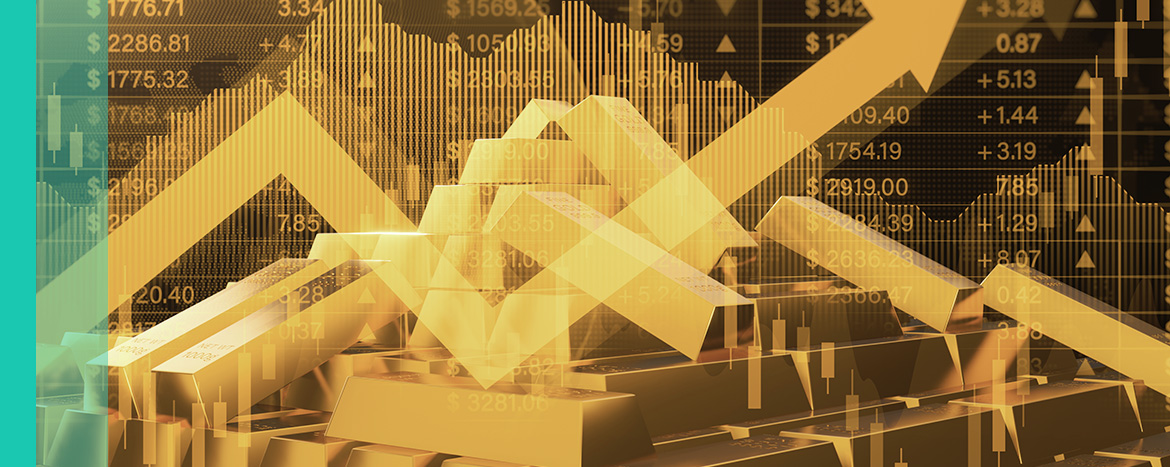
Investment views
Market watch: Tailwinds from a Changing World
The Quick Take
- Shifts in US policy have prompted investors to reassess exposure to dollar assets
- Emerging markets and precious metals benefited as diversification trends gained traction
- Our multi-asset funds remained well positioned, with high global equity exposure and, within that, a tilt away from the US
Elections come around regularly in established democracies, and governments change according to the outcomes of these elections. Most of the time, there are nuanced differences between the various parties and candidates. It is not often that one sees major changes in policy direction that affect the world order. The second Trump administration is, however, an exception. The shift away from globalisation toward an ‘America First’ agenda has already begun to reshape the way countries engage on trade and foreign policy.
The import tariffs imposed on just about all US trading partners, the treatment of immigrants, the granting of visas for students and people seeking work, the cessation of US aid, and an unpredictable foreign policy have led many countries to view the US as a less predictable ally and business partner. Whether by design or not, these policies have encouraged countries and companies to diversify away from the US and the US dollar. The result is a weaker US dollar, rebounding emerging market currencies, and a soaring gold price.
Exporters to the US that are facing high tariffs are scrambling to find alternative markets, which is clearly difficult given the sheer size of the US economy. So far, the global economy has been resilient, but, as most tariffs only took effect during the third quarter, it is still too early to assess the full impact. Some weakness may lie ahead.
GOLD AND EMERGING MARKET GAINS
The gold price rose by another 17% (in US dollars) during the quarter, taking year-to-date gains to 47% - new all-time highs were reached virtually every week. Emerging markets have also benefited from the shift away from the US. The MSCI Emerging Markets Index rose by 10.6% (in US dollars) during the quarter and 27.5% year to date, compared to 7.3% and 17.4% for the MSCI World Index. Emerging market equities have underperformed for many years, and valuations remain well below those of developed markets. The trend away from the US may well continue to act as a tailwind for emerging markets for some time to come. Our multi-asset funds have a high exposure to global equities and, within that, much lower US exposure than its weight in the MSCI All Country World Index. This is a position based on valuations and one we continue to hold.
The JSE All Share Index, with its high gold weighting, rose by 12.9% (in rands) during the quarter and is up by 31.7% for the year to date. The JSE Resources Index rose by an astonishing 46.8% (in rands) during the quarter and 104.9% year to date. The rand has followed the trend of appreciating emerging market currencies and has gained 8.3% on the US dollar since the start of the year. The stronger rand and relatively weak oil price have kept transport costs in check, and inflation has continued to surprise on the low side. The South African Reserve Bank (SARB) paused its rate cuts at the last meeting, but further cuts remain likely.
Precious metals (gold and the platinum group metals) account for roughly 15% of South Africa (SA)’s exports. The sharp rise in the prices of these metals compared to the soft oil price has improved SA’s terms of trade and lent further support to the currency. Lower inflation, an appreciating rand and the SARB’s intention to move the inflation target to 3% have had a favourable impact on bond yields. The result is that the total return from the FTSE/JSE All Bond Index was 6.9% (in rands) for the quarter and 14.0% for the year to date. Multi-asset funds consequently performed well, with all the major building blocks delivering positive returns.
DEBT AND DISCIPLINE
Looking ahead, one of our key concerns is the high government debt levels in many developed countries. Bond yields have moved higher in the UK and France recently, as there has been renewed focus on the fiscal health of these nations. The same applies to others, including the US, where the big spending bill passed recently will add further to government debt. We continue to avoid global sovereign debt as a result. In our view, yields are simply not high enough to compensate investors for the risk. At some point, governments will have to be tough and curb spending, raise taxes, or both. But fiscal austerity is politically unpopular and usually delayed until crisis forces action. No one can say when that point will be reached, but it adds another leg to the bullish case for gold.
SA remains stuck in a low-growth rut, largely due to decades of underinvestment in productive infrastructure. While there have been some improvements in power and rail delivery, the backlog is immense, and progress remains too slow. The fiscus is constrained, with high current expenditure and the rising cost of debt restricting the government’s ability to invest in the right areas. In such an environment, the difference between winning businesses and the mediocre becomes more apparent. We need to pick stocks linked to the SA economy very carefully to avoid the vulnerable ones.
PORTFOLIO POSITIONING
Many domestic stocks offer dividend yields higher than what can be achieved in the money market. Although earnings growth may be slow, low valuations and attractive dividend yields make these stocks more appealing than holding domestic cash. As a result, our multi-asset funds have low cash holdings.
Financial markets have been very kind to investors of late. Our multi-asset funds have been well positioned with high global equity exposure and, within that, a tilt away from the US.
 Global (excl USA) - Institutional
Global (excl USA) - Institutional



